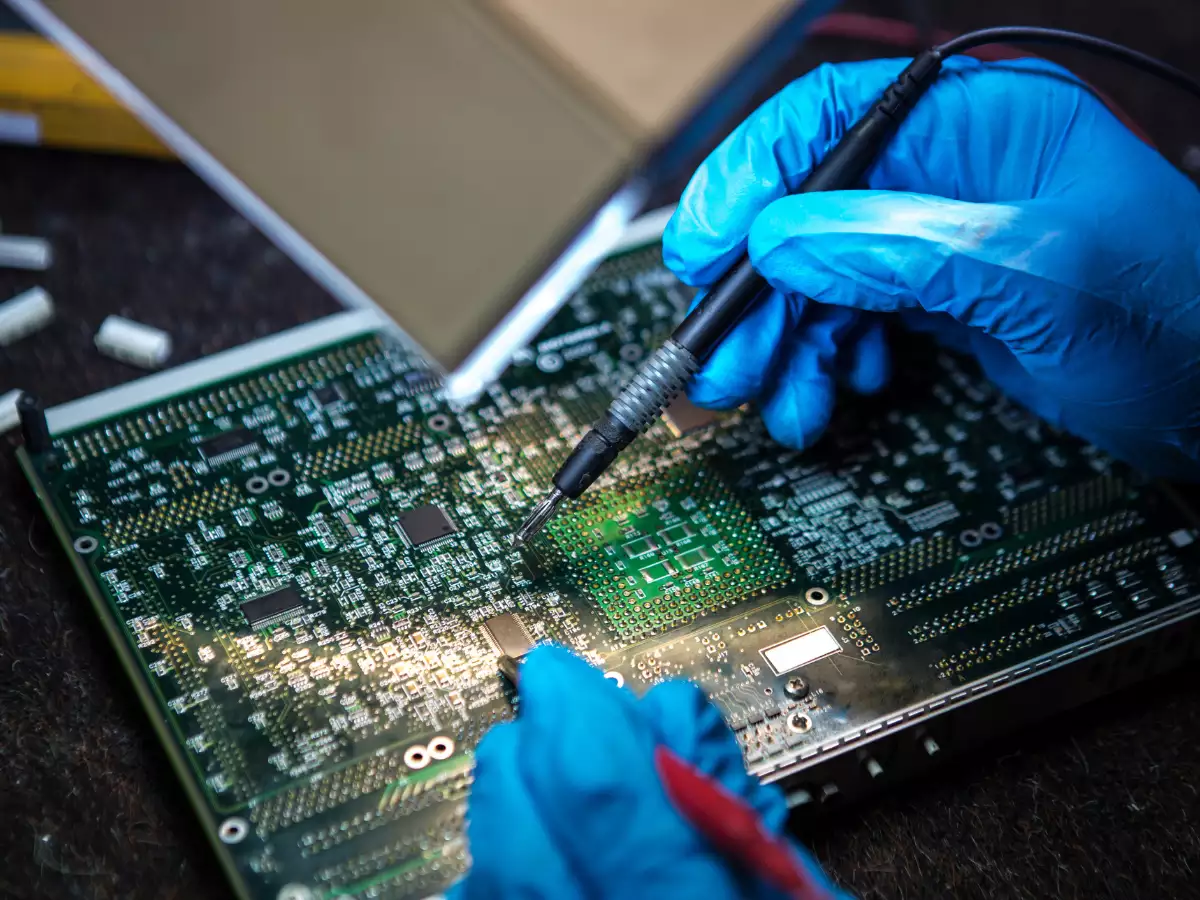India’s booming electronics manufacturing industry, a pillar of its export ambitions and Make in India initiative, is facing a new and growing threat from the Middle East. Countries like Saudi Arabia and the United Arab Emirates (UAE) have begun investing heavily in advanced manufacturing, especially in the electronics sector. This rapid development has prompted Indian industry leaders to sound the alarm, urging the government to take notice of this shifting global dynamic.
The India Cellular and Electronics Association (ICEA), which represents major global and domestic manufacturers such as Apple, Dixon, Foxconn, Xiaomi, Lava, and Motorola, has expressed serious concerns. According to ICEA, India’s hard-earned position as a global hub for electronics assembly and export is now being challenged by the aggressive industrial strategies of Gulf nations, particularly Saudi Arabia and the UAE.
Gulf Nations Step Into High-Tech Manufacturing
Both Saudi Arabia and the UAE are looking beyond oil. They’re pivoting towards technology and advanced manufacturing as part of their long-term economic visions—Saudi Vision 2030 and the UAE’s Operation 300bn strategy. These national programs are aimed at reducing dependence on hydrocarbons and creating knowledge-based economies.

In Saudi Arabia, the focus on industrial diversification has resulted in massive funding for infrastructure, incentives for foreign investment, and the development of Special Economic Zones (SEZs). A striking example is the launch of Alat, a state-backed electronics and industrial technology company, which aims to position the kingdom as a global leader in advanced manufacturing. Alat plans to create nearly 39,000 direct jobs and contribute approximately $9.3 billion to Saudi Arabia’s non-oil GDP by 2030. It is focusing on high-impact sectors including semiconductors, robotics, and smart devices.
Alongside this, Saudi Arabia’s overall manufacturing investments have crossed the $130 billion mark, and its goal of reaching 36,000 factories by 2035 showcases its long-term commitment. These factories aren’t just small-scale operations—they’re being developed with advanced technologies, automation, and foreign partnerships, setting a new benchmark for the region.
The UAE, too, has entered the race with impressive momentum. With an already established reputation for innovation and ease of doing business, the country has ramped up efforts to build a modern manufacturing base. Its capital, Abu Dhabi, accounts for a significant share of the UAE’s electronics output. Government initiatives are fueling the growth of smart manufacturing, supported by investment-friendly policies, tax benefits, and technology parks.
Consumer electronics in the UAE have become a vital part of the economy. In 2024 alone, the country’s electronics market was valued at over $16 billion and is expected to grow steadily at nearly 8% annually to surpass $25 billion by 2030. The UAE is now aiming not just to import electronics but to produce and export them globally.
Why Indian Manufacturers Are Worried
For India, which has spent the last decade nurturing its electronics industry through schemes like Production Linked Incentives (PLIs), electronics clusters, and tax benefits, the emergence of powerful new competitors is a matter of deep concern.
The ICEA has flagged three key areas where the Gulf nations are becoming formidable rivals:
- Special Economic Zones (SEZs) and Tax Benefits: Both Saudi Arabia and the UAE are offering highly competitive SEZ frameworks. These include exemptions on corporate taxes, customs duties, and regulatory ease—factors that are extremely attractive to global manufacturers.
- Ease of Doing Business and Infrastructure: Gulf nations are investing heavily in world-class infrastructure. Their ports, logistics hubs, and streamlined government policies make it easier and faster to set up and run factories compared to many Indian states, where land acquisition, permits, and power supply can still pose challenges.
- Labor and Cost Competitiveness: While India has traditionally enjoyed lower labor costs, the Gulf countries are beginning to close the gap by training a younger, more technically skilled workforce. Additionally, these nations are also importing skilled labor from Southeast Asia and Africa to support rapid industrial growth.
ICEA’s leadership warns that India could lose out on significant export opportunities if the government does not take immediate steps. Currently, India exports electronics worth over $25 billion annually, and the goal is to hit $300 billion in electronics production by 2026. But these targets could be at risk if investors and brands begin diverting resources to the Middle East.
Call for Policy Action—Not Tariffs
Interestingly, the ICEA is not recommending retaliatory tariffs or protectionist measures. Instead, it is urging the Indian government to act strategically and diplomatically.
According to industry insiders, the goal should be to stay competitive, not just in cost, but in value addition, innovation, and global partnerships. The association is calling for greater investment in research and development, a push for semiconductor manufacturing, and targeted support for companies involved in high-end electronic components—not just assembly.
Additionally, ICEA wants India’s Ministry of Electronics and Information Technology (MeitY) and Ministry of External Affairs (MEA) to closely monitor developments in the Gulf region. Engaging with their counterparts in Saudi Arabia and the UAE could help India ensure a level playing field and foster collaboration, instead of rivalry.
India could also consider learning from Gulf models in terms of infrastructure and policy speed. While India’s PLI scheme has attracted major players like Apple and Samsung, bureaucratic delays and state-level policy hurdles still act as roadblocks for many mid-size and smaller companies.
A Global Shift in Electronics Supply Chains
The concerns raised by ICEA come at a time when global electronics supply chains are undergoing massive realignment. The U.S.–China trade war, disruptions caused by COVID-19, and rising demand for nearshoring have all pushed countries to diversify their manufacturing bases. This has opened a window for new entrants—especially those with deep pockets and long-term visions like the Gulf nations.

For global brands, setting up operations in Saudi Arabia or the UAE offers access to Middle Eastern, African, and European markets with favorable trade routes and fewer geopolitical risks. Add to that their investor-friendly climates, and it’s easy to see why the Gulf is becoming an attractive alternative to Asia.
India, therefore, cannot afford to be complacent. It needs to double down on ease of doing business, streamline GST and labor laws, and fast-track infrastructure development if it wants to stay ahead in the game.
What Lies Ahead?
As the Middle East emerges as a surprising new player in the global electronics manufacturing landscape, India faces a critical moment of introspection and action. The country’s electronics sector has come a long way in the past decade, but the competition is evolving—and fast.
To remain a key global electronics hub, India must respond with innovation, infrastructure, and smart policy. The ICEA’s warning is not just a cautionary note; it’s a wake-up call for policymakers, investors, and industry leaders.
Only by staying agile, proactive, and globally connected can India safeguard its electronics future in an increasingly competitive world.



